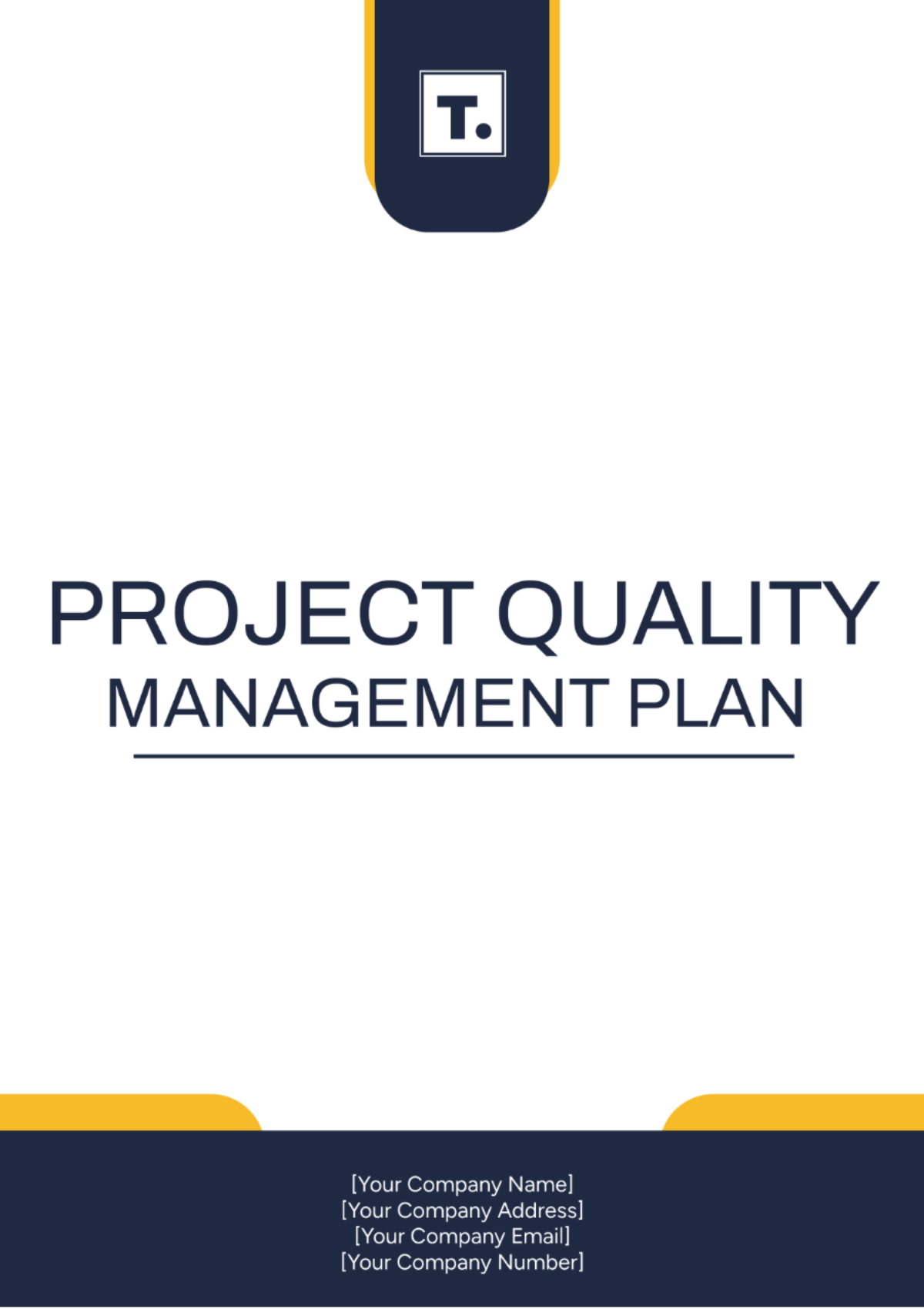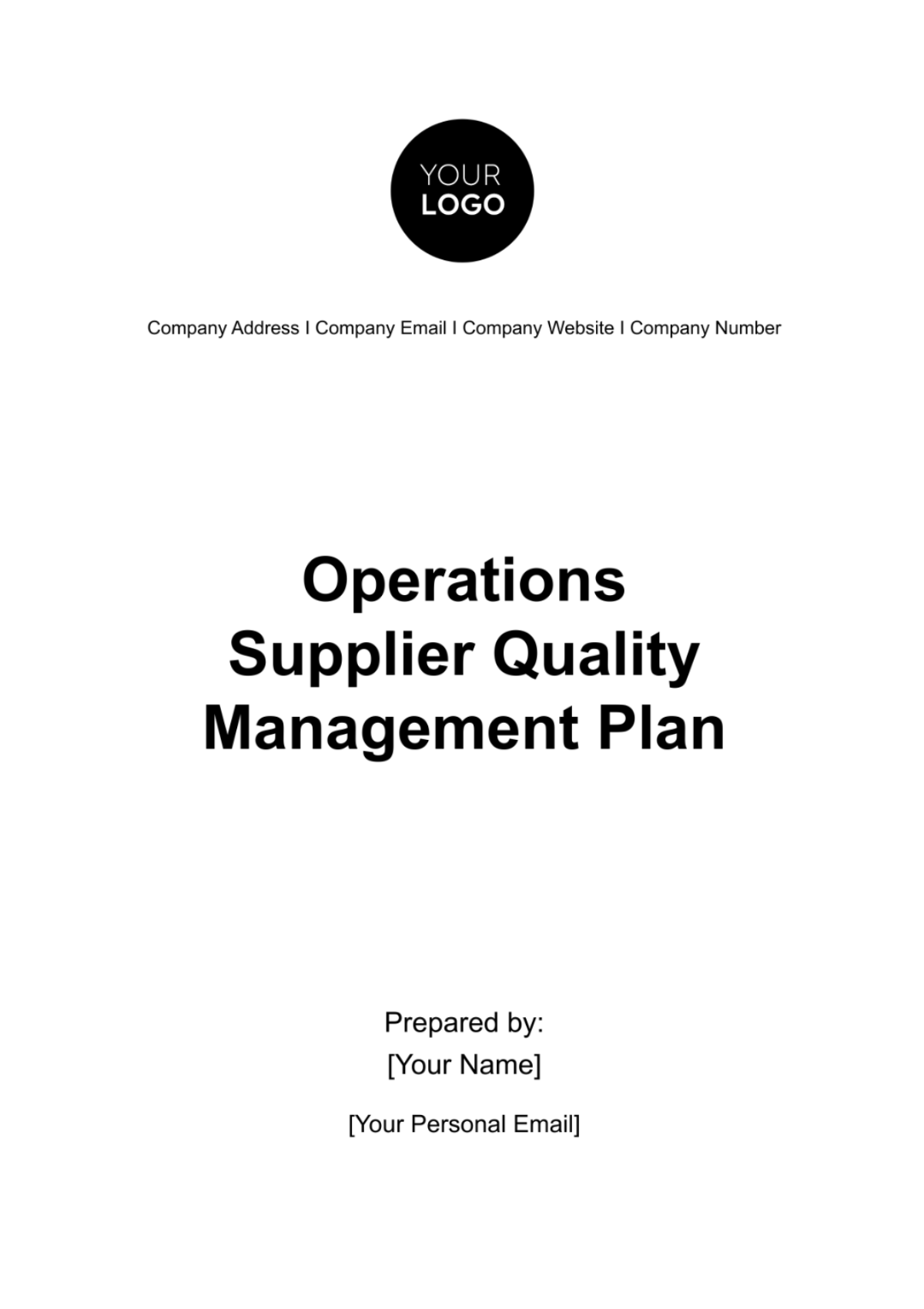Operations Quality Management Plan
Prepared By: | [Your Name] |
Company: | [Your Company Name] |
Date: | [Date] |
Introduction
This Operations Quality Management Plan is designed to ensure that [Your Company Name]'s operations meet industry standards, regulatory requirements, and customer expectations. It establishes a structured framework for maintaining quality in all aspects of operational processes, from production to delivery. By focusing on minimizing defects, enhancing efficiency, and exceeding customer satisfaction, this plan serves as a cornerstone for operational excellence.
1. Objectives
The key objectives of this plan are:
Compliance: Adhering to industry standards like ISO 9001, OSHA, or other relevant frameworks.
Error Reduction: Reducing defects in output to below 1% of total production.
Customer Satisfaction: Achieving a satisfaction score of 95% or higher through consistent service quality.
Efficiency Optimization: Enhancing operational efficiency by improving cycle times and resource utilization.
2. Quality Standards and Policies
2.1 Regulatory Compliance
Compliance with OSHA safety regulations for workplace operations.
Regular audits to ensure alignment with ISO 9001 standards.
Maintaining environmental sustainability practices in line with EPA guidelines.
2.2 Operational Metrics
Production Quality: Maintain defect rates below 0.8%.
Process Efficiency: Average production cycle time of 4 hours or less.
2.3 Customer Expectations
On-time delivery rate of 99%.
Post-service customer satisfaction surveys with an average score of 4.8/5.
3. Roles and Responsibilities
Quality Assurance Manager: Conduct audits, implement corrective actions, and oversee compliance with quality standards.
Operations Manager: Monitor workflow and ensure adherence to operational KPIs.
Employees: Follow established protocols and report any deviations or risks.
Senior Leadership: Approve policies, allocate resources, and provide strategic direction.
4. Quality Control Mechanisms
4.1 Monitoring Systems
Deploy real-time tracking systems, such as production line sensors and service delivery software.
Monthly quality audits to identify and address gaps in processes.
4.2 Corrective and Preventive Actions (CAPA)
Corrective: Address specific issues like equipment failures or missed delivery deadlines immediately.
Preventive: Regularly review SOPs and update them to mitigate recurring problems.
4.3 Key Performance Indicators (KPIs)
KPI | Target | Frequency |
|---|---|---|
Defect Rate | Below 0.8% | Weekly |
On-Time Delivery | 99% or higher | Monthly |
Customer Satisfaction | 95% or higher | Quarterly |
5. Continuous Improvement Strategies
5.1 Regular Process Reviews
Conduct quarterly reviews of inventory management and production workflows to identify inefficiencies.
Leverage customer feedback to refine service protocols.
5.2 Advanced Training Programs
Provide Six Sigma Green Belt training for managers.
Schedule mandatory refresher courses every six months for operational staff.
5.3 Technology Integration
Implement AI-powered analytics for predicting equipment maintenance needs.
Use IoT devices to monitor production quality in real time.
6. Risk Management
6.1 Risk Identification
Identify high-risk areas such as supply chain delays or equipment malfunctions.
Maintain a risk register updated with likelihood and impact scores for each identified risk.
6.2 Risk Mitigation
Develop contingency plans for supplier disruptions, including alternative sourcing arrangements.
Conduct quarterly drills to test emergency response procedures for operational hazards.
7. Implementation Plan
Task | Timeline | Responsible Party | Status |
|---|---|---|---|
Develop SOPs for production lines | 1 month | Quality Assurance Team | Pending |
Install real-time monitoring tools | 2 months | IT Department | In Progress |
Conduct employee training | 3 months | HR Department | Pending |
Pilot a new efficiency strategy | 4 months | Operations Manager | Pending |
8. Quality Reporting
8.1 Internal Reporting
Weekly defect rate reports are to be shared with all team leads.
Monthly operations review meetings to discuss quality metrics and corrective actions.
8.2 External Reporting
Submit quarterly compliance reports to regulatory bodies.
Publish annual operational quality reports for stakeholders.
9. Conclusion
This Operations Quality Management Plan provides a robust roadmap for ensuring operational quality. By adhering to defined standards, proactively managing risks, and fostering a culture of continuous improvement, it establishes a framework for meeting and exceeding customer expectations. The plan underscores a commitment to excellence, innovation, and long-term success in achieving operational goals.



